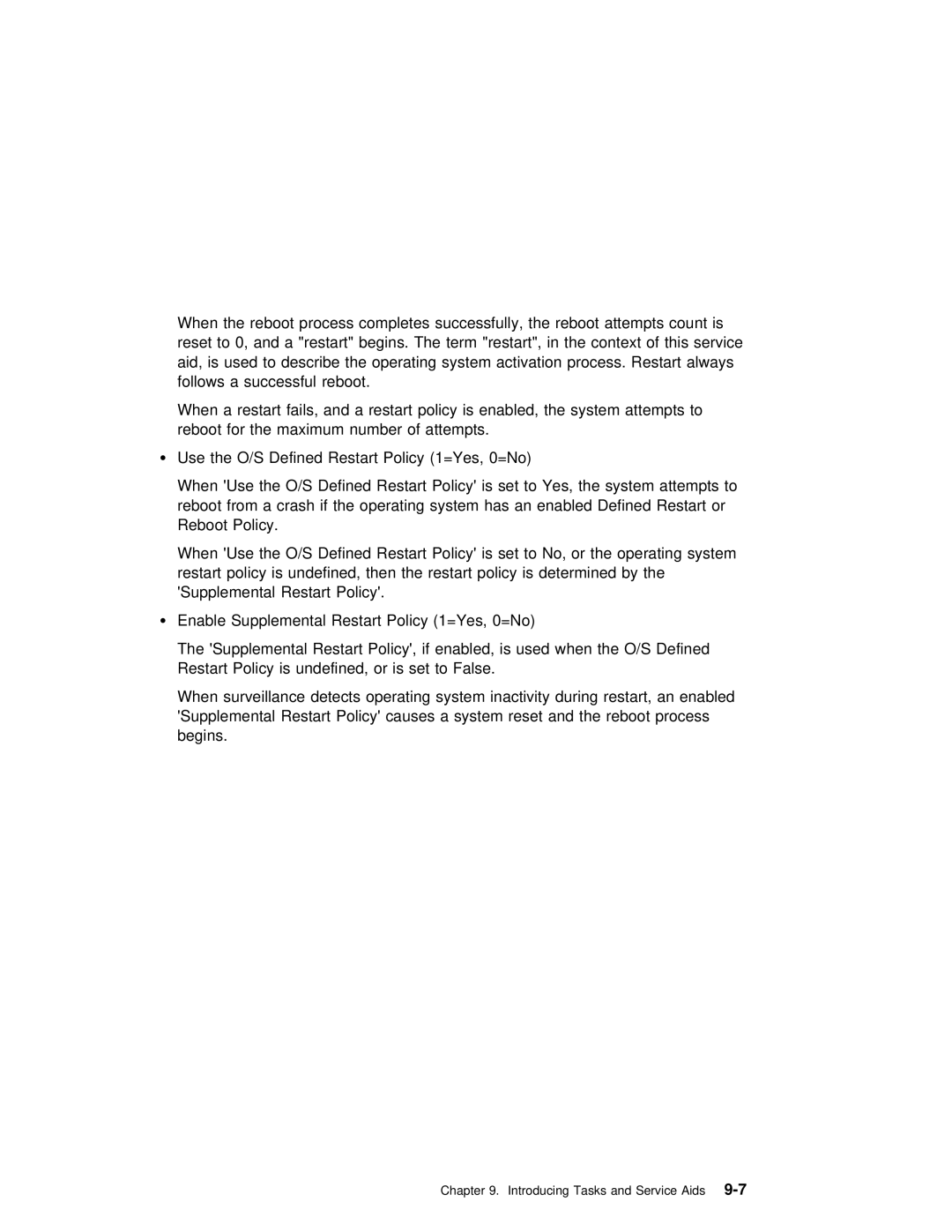When the reboot process completes successfully, the reboot attempts count is reset to 0, and a "restart" begins. The term "restart", in the context of t aid, is used to describe the operating system activation process. Restart a follows a successful reboot.
When a restart fails, and a restart policy is enabled, the system attempts reboot for the maximum number of attempts.
ŸUse the O/S Defined Restart Policy (1=Yes, 0=No)
When 'Use the O/S Defined Restart Policy' is set to Yes, the system attempt reboot from a crash if the operating system has an enabled Defined Restart Reboot Policy.
When 'Use the O/S Defined Restart Policy' is set to No, or the operating sy restart policy is undefined, then the restart policy is determined by the 'Supplemental Restart Policy'.
ŸEnable Supplemental Restart Policy (1=Yes, 0=No)
The 'Supplemental Restart Policy', if enabled, is used when the O/S Defined Restart Policy is undefined, or is set to False.
When surveillance detects operating system inactivity during restart, an enabled 'Supplemental Restart Policy' causes a system reset and the reboot process begins.
